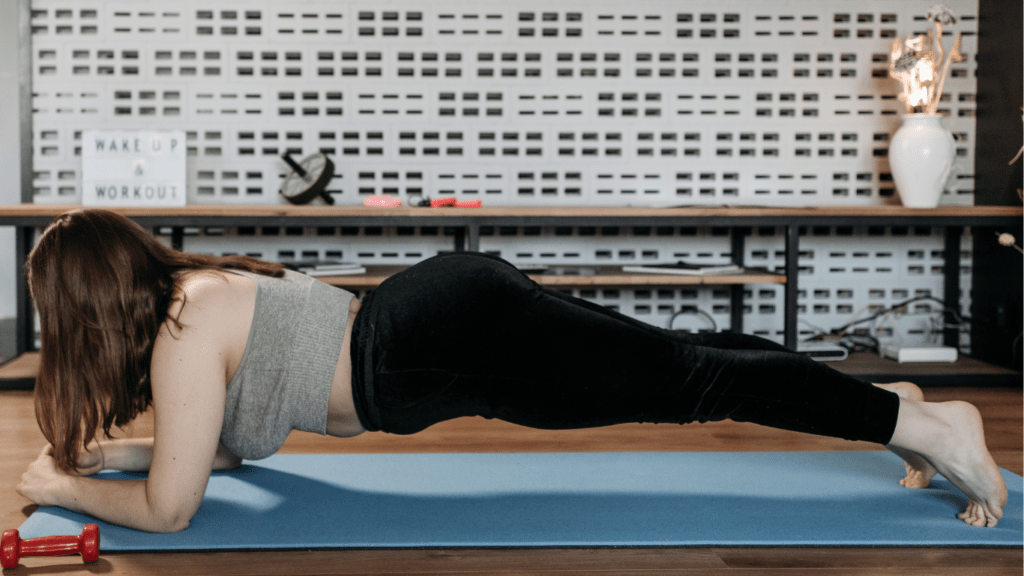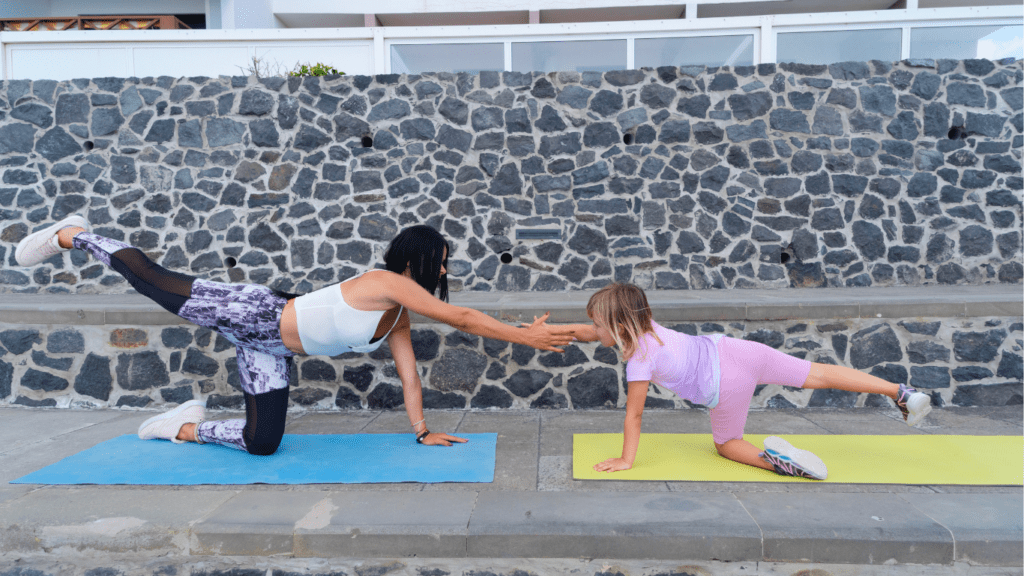Understanding Postpartum Fitness
Postpartum fitness involves a careful approach to exercise after childbirth. The body’s undergone significant changes, and new mothers must consider these before diving into fitness routines. Immediate postpartum exercise can lead to injuries if not done correctly.
One key aspect of postpartum fitness is diastasis recti. This condition, where abdominal muscles separate during pregnancy, affects many women. Bridging the gap between these muscles is essential before starting any intensive core workout. A diastasis recti check can ensure safe exercises.
Pelvic floor health is another critical factor. Pregnancy and childbirth can weaken the pelvic floor muscles, leading to incontinence or pelvic organ prolapse. Gentle pelvic floor exercises, like Kegels, help rebuild strength.
Considering overall body strength is essential too. Postpartum periods demand functional strength for daily tasks like lifting the baby or carrying groceries. Incorporating full-body exercises like:
- squats
- lunges
gradually increases this strength while incorporating the core and pelvic floor. Breastfeeding mothers also need to remember that exercise can affect milk supply. Conditioning workouts at moderate intensity while maintaining hydration and calorific intake avoids any negative impact on breastfeeding.
Consulting healthcare professionals before starting any postpartum fitness regimen is advised. Doctors, physical therapists, or certified postpartum trainers customize safe, effective routines fitting individual recovery progress.
Importance Of Rebuilding Core And Strength
Rebuilding core and strength postpartum plays a vital role in recovery and long-term health. This requires targeted, safe exercises designed for new mothers.
Benefits Of Postpartum Exercise
- Postpartum exercise offers numerous benefits.
- Enhanced core strength helps reduce back pain, a common issue post-childbirth.
- Improved strength aids in daily activities, from lifting the baby to household chores.
- Exercise also boosts mood by releasing endorphins, which combat postpartum depression.
- It promotes better sleep, vital for overall recovery.
Risks Of Not Engaging In Postpartum Fitness
Neglecting postpartum fitness can lead to various complications. Weak core muscles may result in chronic back pain and poor posture. Ignoring strength training can make daily tasks more exhausting and increase the risk of injuries. In the long term, lack of exercise can contribute to weight gain and associated health issues like diabetes. Engaging in postpartum fitness is essential for a healthy recovery and sustained well-being.
Safe Core Exercises For Postpartum Moms

I focus on safe core exercises to help postpartum moms rebuild strength and stability. Gentle and effective movements target the core and support overall recovery.
Pelvic Tilts
Pelvic tilts improve core stability by engaging abdominal muscles. Lie on your back with knees bent and feet flat on the floor. Flatten your back against the floor by tilting your pelvis upward, then release. Perform 10-15 repetitions. If you’re experiencing any discomfort, stop and consult your doctor.
Bridges
Bridges strengthen the lower back and glutes while supporting the core. Lie on your back with knees bent and feet hip-width apart. Lift your hips toward the ceiling, forming a straight line from shoulders to knees. Hold for a few seconds, then lower your hips. Repeat 10-15 times. Start slowly and progress as you feel stronger.
Modified Planks
Modified planks offer a gentle way to engage the entire core without straining. Start on your hands and knees, keeping your wrists under your shoulders. Step your feet back, forming a straight line from head to knees or toes. Hold for 10-15 seconds, gradually increasing the duration. Keep your core tight and avoid sagging in the lower back. If this causes strain, opt for knee-supported planks instead.
Safe Strength-Building Exercises For Postpartum Moms
Strengthening the body after childbirth requires careful, focused exercises. Let’s explore a few effective exercises to help rebuild strength safely.
Bodyweight Squats
Bodyweight squats engage the lower body and improve overall strength. Stand with feet shoulder-width apart, toes slightly turned out. Lower into a squat by bending the knees, keeping the chest up and the weight in the heels. Return to standing. Repeat 10-15 times.
Wall Push-Ups
Wall push-ups target the upper body and core without overstraining. Stand arm-distance from a wall, place hands shoulder-width on the wall at chest height. Bend elbows to lower the chest toward the wall, then push back to the starting position. Repeat 10-15 times.
Light Dumbbell Rows
Light dumbbell rows strengthen the back and improve posture. Hold a light dumbbell in each hand, hinge forward at the hips with a slight bend in the knees. Pull the dumbbells toward your waist, squeezing the shoulder blades together. Lower the weights back to start. Repeat 10-15 times.
Tips for a Successful Postpartum Fitness Journey
Navigating postpartum fitness may be challenging, but these tips can make the journey smoother. Start with understanding your body’s signals and gradually introduce exercises with realistic expectations.
Listening To Your Body
Pay attention to your body’s signals to avoid overexertion. If you feel pain or severe discomfort during or after workouts, take a break. Postpartum recovery timelines vary; some may need more time to heal. For example, after a cesarean section, longer recovery may be necessary. Consult a healthcare professional to monitor your progress and ensure a safe fitness routine.
Setting Realistic Goals
Set attainable fitness goals to sustain motivation and track progress. Begin with short-term goals, such as performing pelvic tilts for 5 minutes daily, then aim for long-term objectives like jogging for 20 minutes by the three-month mark. Adjust goals based on how your body responds and your recovery pace. Remember, rebuilding core strength and overall fitness gradually yields better results.
Incorporating Rest And Recovery
Include rest days in your exercise plan for recovery and muscle rebuilding. Overworking your body can lead to fatigue and potential injuries. Schedule at least two recovery days per week, and practice relaxation techniques like deep breathing or gentle yoga stretches. Resting helps in managing fatigue and boosting energy levels for daily activities, crucial for postpartum recovery.




